The Philodendron Martianum, commonly known as the “Fat Boy Philodendron,” is a unique and striking houseplant that has captured the attention of plant enthusiasts. Known for its thick, glossy leaves and bulbous stems, this plant is a standout in any indoor garden. This comprehensive guide will provide you with all the information you need to grow and care for the Philodendron Martianum successfully.
Introduction
The Philodendron Martianum is a member of the aroid plant family, which includes popular varieties like Monstera, Anthurium, and Aglaonema. Native to the tropical rainforests of Brazil, this plant is prized for its robust appearance and unique growth habit. Similar to Epipremnum and Syngonium, the Philodendron Martianum is not only beautiful but also relatively easy to care for.
1.1. Brief introduction to Philodendron martianum
Philodendron martianum is a unique and fascinating plant that has captivated the attention of houseplant enthusiasts around the world. Belonging to the Araceae family, this attractive tropical plant is characterized by its stunning leaves and intriguing flowers. In this article, we will explore everything there is to know about the Philodendron martianum, including its botanical features, habitat, growing conditions, propagation techniques, and more. So, are you ready to dive into the world of Philodendron martianum? Let’s get started!
2. Botanical Description
2.1. Leaves
The most striking feature of Philodendron martianum is its leaves. They are large, heart-shaped, and glossy, with a rich green color that adds a touch of elegance to any indoor space. The leaves can grow up to 12 inches long and 6 inches wide, displaying prominent veins that further enhance their visual appeal.
2.2. Flowers
The flowers of Philodendron martianum are not as conspicuous as its leaves but are equally fascinating. They consist of a greenish-white spathe surrounding a spadix, which is a spike-like structure that bears the actual flowers. These blooms typically appear during the warmer months and exude a mild, pleasant fragrance.
2.3. Roots
Philodendron martianum has a robust root system that provides ample support for the plant’s growth. The roots are known for their aerial nature, which allows them to absorb moisture and nutrients from the surrounding air.

3. Habitat and Distribution
Native to Brazil, Philodendron martianum thrives in the lush, tropical rainforests of South America. In the wild, these plants can be found growing on the forest floor or climbing trees, taking advantage of the high humidity and dappled sunlight provided by the dense canopy above.
4. Growing Conditions
4.1. Soil
Philodendron martianum prefers well-draining, fertile soil with a slightly acidic pH between 6.0 and 6.5. A mix of peat moss, perlite, and orchid bark can provide the ideal growing medium for this plant.
4.2. Light
In its natural habitat, Philodendron martianum receives filtered sunlight through the forest canopy. To mimic these conditions, place yourplant in bright, indirect light. Direct sunlight can cause the leaves to scorch and lose their vibrant color.
4.3. Temperature
As a tropical plant, Philodendron martianum enjoys warm temperatures, with the ideal range being between 65 and 80 degrees Fahrenheit (18-27 degrees Celsius). It can tolerate short periods of cooler temperatures, but prolonged exposure to temperatures below 60 degrees Fahrenheit (15 degrees Celsius) can result in slowed growth and potential damage to the plant.
4.4. Water
Philodendron martianum requires consistently moist soil but should not be left sitting in water. Allow the top inch of soil to dry out between waterings to prevent overwatering and root rot. In general, watering once a week during the growing season and every two weeks in winter should suffice. To understand the best watering practices for Philodendrons, see our insights

5. Propagation
5.1. Stem cuttings
One of the easiest ways to propagate Philodendron martianum is through stem cuttings. Select a healthy stem with at least one leaf and make a clean cut below a node. Place the cutting in water or moist soil and keep it in a warm, bright spot until roots form, usually within 2-4 weeks.
5.2. Air layering
Air layering is another effective method for propagating Philodendron martianum. This technique involves creating a small wound on a stem, packing it with moist sphagnum moss, and wrapping it in plastic to maintain humidity. Once roots form at the wound site, the new plant can be severed from the parent and potted separately.
5.3. Division
Mature Philodendron martianum plants can be propagated by division, which involves separating the root ball into smaller sections, each containing a portion of the root system and at least one stem. Gently tease apart the roots and plant each section in its own pot with fresh soil.
6. Pest and Disease Management
Philodendron martianum is relatively resistant to pests and diseases, but it may occasionally suffer from infestations of spider mites, mealybugs, or scale insects. Treat these pests with insecticidal soap or neem oil, and maintain proper humidity levels to prevent future infestations.
Overwatering can lead to root rot and fungal infections. To prevent these issues, ensure proper drainage and avoid letting the plant sit in standing water.
7. Uses and Benefits
7.1. Ornamental purposes
With its stunning foliage and unique growth habit, Philodendron martianum makes an eye-catching addition to any indoor plant collection. Its vibrant green leaves can brighten up any living space and create a calming, natural atmosphere.
7.2. Air purification
Like many other indoor plants, Philodendron martianum has the ability to purify the air by absorbing harmful pollutants and releasing fresh oxygen. This can help improve the overall air quality in your home, making it a healthier environment for you and your family.
7.3. Health benefits
Caring for Philodendron martianum can provide numerous mental and emotional health benefits, such as reducing stress, improving concentration, and fostering a sense of well-being.

8. Pruning and Maintenance
Regular pruning is essential to keep your Philodendron martianum looking its best. Trim away any dead or yellowing leaves to encourage new growth and maintain the plant’s shape. Pruning also helps to promote a bushier growth habit, as the plant will produce new stems and leaves from the cut sites.
9. Repotting
Philodendron martianum should be repotted every 2-3 years or when it becomes root-bound. Gently remove the plant from its pot, taking care not to damage the root system. Choose a new pot that is 1-2 inches larger in diameter than the previous one, and fill it with fresh, well-draining soil. Place the plant in the new pot, ensuring that the top of the root ball is level with the soil surface. Water thoroughly to help the roots settle in their new environment.
10. Common Issues
Some common issues that may arise while growing Philodendron martianum include yellowing leaves, drooping, and stunted growth. Yellowing leaves can be a sign of overwatering or insufficient light, so adjusting your watering schedule and ensuring the plant receives adequate indirect light may help alleviate this issue.
Drooping can be a result of underwatering, so make sure to maintain consistently moist soil. Stunted growth can be caused by a lack of nutrients or inadequate growing conditions, so be sure to provide proper care for your plant to help it thrive.
11. Similar Species
Philodendron martianum is just one of many captivating species within the Philodendron genus. Some other popular Philodendron varieties that share similar characteristics include Philodendron hederaceum (Heartleaf Philodendron), Philodendron bipinnatifidum (Lacy Tree Philodendron), and Philodendron xanadu (Xanadu Philodendron). Each of these plants offers its own unique charm and can make a lovely addition to your indoor garden.

12. Conclusion
Philodendron martianum is an alluring tropical plant that can bring a touch of natural beauty to any indoor space. With its captivating leaves, intriguing flowers, and relatively easy-care requirements, it’s no wonder that this species has become a favorite among houseplant enthusiasts. By providing the proper growing conditions and care, you can enjoy the stunning presence of Philodendron martianum in your home for many years to come.
13. FAQs
Q1: How often should I water my Philodendron martianum?
A1: Water your Philodendron martianum when the top inch of soil feels dry, which is typically once a week during the growing season and every two weeks in the winter.
Q2: Can Philodendron martianum grow in low-light conditions?
A2: While Philodendron martianum can tolerate lower light levels, it prefers bright, indirect light to maintain its vibrant leaf color and promote healthy growth.
Q3: Is Philodendron martianum toxic to pets?
A3: Yes, Philodendron martianum contains calcium oxalate crystals, which can be toxic to pets if ingested. Keep the plant out of reach of curious pets to prevent accidental ingestion.
Q4: How often should I fertilize my Philodendron martianum?
A4: Fertilize your Philodendron martianum every 4-6 weeks during the growing season with a balanced, water-soluble fertilizer. Reduce fertilization frequency to once every 2-3 months during the winter months.
Q5: How can I increase humidity for my Philodendron martianum?
A5: To increase humidity for your Philodendron martianum, you can place the plant on a tray filled with water and pebbles, mist the leaves regularly, or use a humidifier.






![12x Monstera Borsigiana Albo half leaves variegata [3-4 leaves]](https://greenboog.com/wp-content/uploads/2024/10/Monstera-Borsigiana-Albo-half-leaves-variegata-1-500x500.jpg)



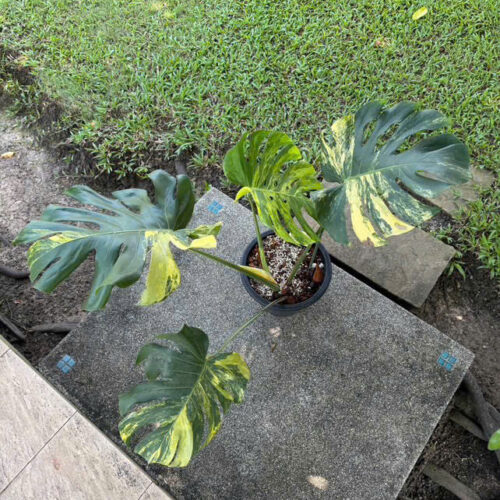



![10 Pots x Monstera Aurea Variegated / Mix Aurea tri color 3-4 leaves [well variegated]](https://greenboog.com/wp-content/uploads/2024/08/Monstera-Aurea-Tri-color-500x500.jpg)


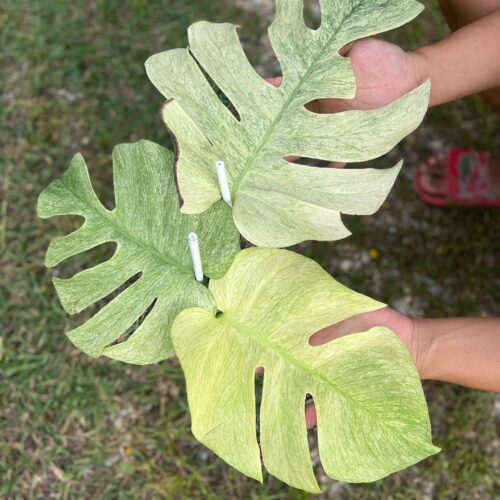

![[SALE] 10 Pots x Monstera Aurea Variegated 3-6 leaves [Medium size]](https://greenboog.com/wp-content/uploads/2025/01/Monstera-Aurea-variegated-4-6-leafs-500x482.jpg)

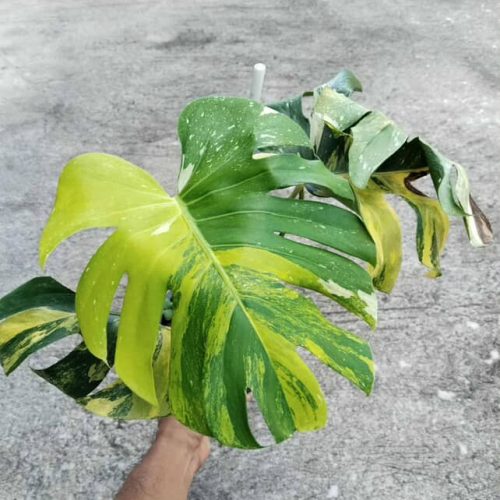







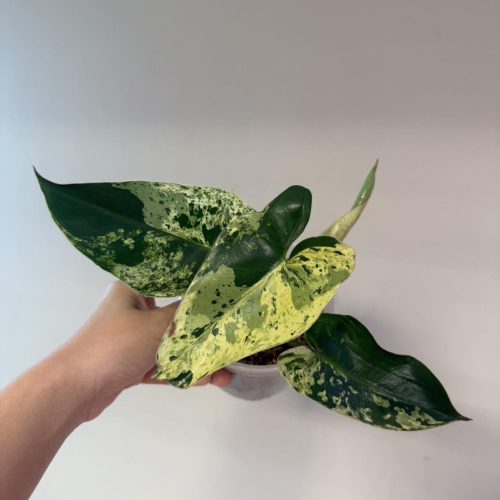









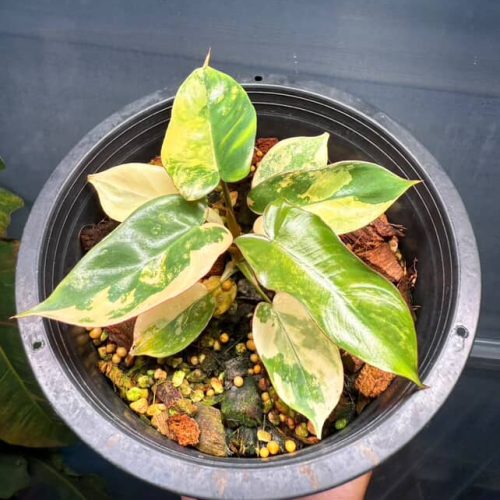


In the mornings I see water on the leaves of my philodendron. Is that normal?